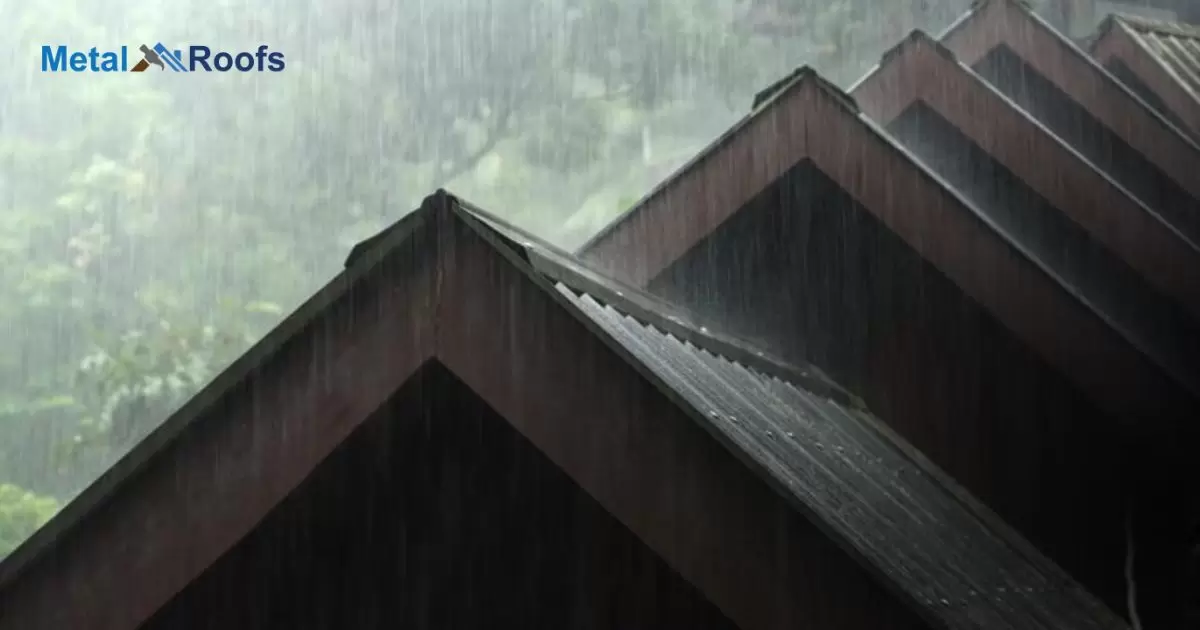Metal roofs are designed to withstand high winds. Their strength comes from the underlying decking, fasteners, and the panels themselves. Most metal roofing is rated to stand up to winds of at least 90 mph.
With additional bracing and supports, some metal roofs can withstand hurricane-force winds over 130 mph. Metal roofs can be a smart choice for homes in windy areas. But a key question is, how much wind can a metal roof withstand? These roofs are designed to be durable, and resistant to high winds.
With the right materials and installation, metal roofs can stand up to hurricane-force winds over 100 miles per hour. Knowing the wind rating matters when evaluating options. These roofs are popular in storm-prone regions. They promise durability against high winds. But performance depends on proper installation.
Key Takeaway
- Metal roofs boast strong wind resistance, protecting homes in harsh weather.
- Rigorous testing determines specific wind ratings for each roofing system.
- Professional installation enhances the roof’s ability to withstand powerful gusts.
- Factors like design, slope, and maintenance impact overall wind resilience.
- Investing in a high wind-rated metal roof ensures long-lasting protection.
What Determines Wind Resistance In Metal Roofing?
Metal roofing’s resistance to wind is largely influenced by its design and installation. The slope or pitch of the roof plays a critical role, affecting how wind flows over it. A steeper pitch reduces the direct force of the wind, minimizing the chances of uplift.
Properly fastened metal panels also contribute to wind resistance, as securely anchored roofing materials are less likely to be lifted or damaged during storms. Additionally, the type of metal roofing material matters. Ribbed or corrugated metal panels provide structural strength, making them more resistant to wind uplift.
The thickness and quality of the metal further impact resistance. In essence, a combination of factors, including pitch, installation, panel design, and material quality, collectively determines the wind resistance of metal roofing, ensuring durability and protection against the forces of nature.
Metal Roofs Hold Up In High Winds
| Aspect | Description |
| Material Strength | Sturdy metal materials ensure durability. |
| Wind Ratings | Rigorous testing determines specific limits. |
| Professional Installation | Skilled installers enhance wind resilience. |
| Design and Slope | Roof features impact overall stability. |
| Maintenance Importance | Regular upkeep crucial for wind resistance. |
| Long-Lasting Protection | High wind ratings assure enduring safety. |
Metal roofs are tough. They handle strong winds like a champ. Even when the gusts get feisty, metal roofs stand tall and keep your home safe. No worries about shingles flying off in a storm Metal’s got it covered.
When the wind howls, your metal roof doesn’t budge. It’s like a superhero cape for your house. Secure and steadfast, metal roofs are built to endure nature’s toughest tantrums. So, when the storm hits, you can trust your metal roof to hold its ground, keeping you snug and sound.
Factors That Contribute To Metal Roofs’ Superior Wind Resistance
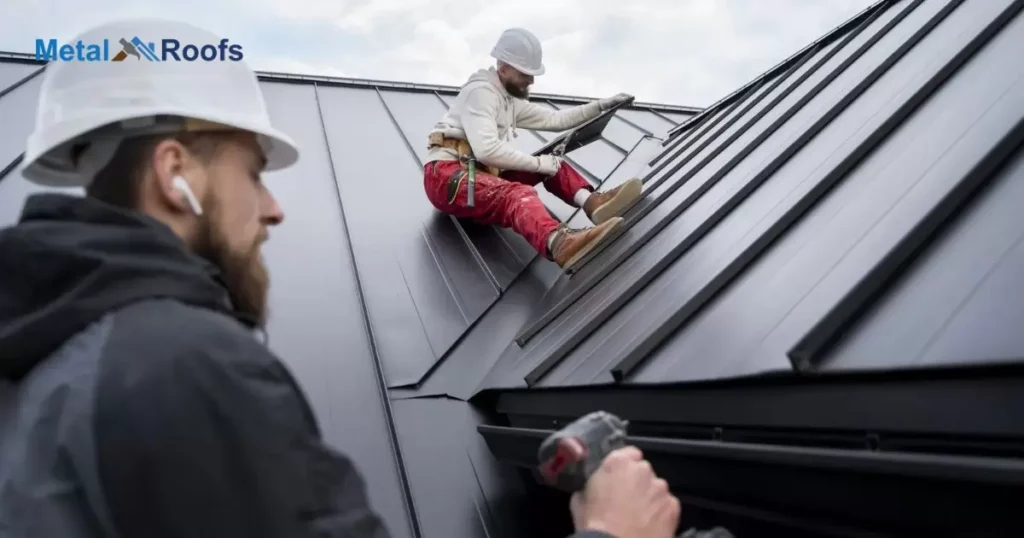
Metal roofs boast gutters on a metal roof exceptional wind resistance, a key attribute derived from their sturdy construction. The interlocking panels create a robust shield, reducing vulnerability to wind forces. This design ensures that the roof remains steadfast, even during fierce storms.
Moreover, the materials used in metal roofs play a pivotal role. Lightweight yet durable metals like aluminum and steel contribute to the overall resilience. This combination of structural integrity and material strength makes metal roofs a reliable choice in regions prone to high winds, providing homeowners with peace of mind in the face of nature’s gusty challenges.
What Wind Uplift Ratings Are Available For Metal Roofing Systems?
Metal roofing systems come with different wind uplift ratings. These ratings indicate the wind speed a roof can withstand. Common wind uplift ratings for metal roofs include 90, 110, and 150 miles per hour. These ratings help homeowners and builders choose the right metal roofing system based on the wind conditions in their region.
When considering metal roofing, it’s crucial to match the wind uplift rating with the local climate. For areas prone to strong winds, a higher uplift rating like 150 mph provides added protection. On the other hand, regions with milder wind conditions might find a 90 or 110-mph rating sufficient. Understanding these ratings ensures your metal roof can weather the storms without a hitch.
Maximum Wind Resistance Of A Metal Roofing System
Metal roofs excel in wind resistance:
- Sturdy materials ensure durability against powerful gusts.
- Rigorous testing determines specific wind ratings for each roofing system.
- Installation by skilled professionals further enhances wind resilience.
- High wind resistance minimizes the risk of damage during storms, ensuring longevity.
Consider factors influencing wind resistance:
- Roof design, slope, and fastening methods contribute to overall stability.
- Regular maintenance is crucial to uphold wind-resistant features over time.
- Investing in a metal roofing system with a high wind rating pays off.
- Choose wisely for enduring protection against the forces of nature.
Can Metal Roofing Systems Be Installed In High Wind Areas?
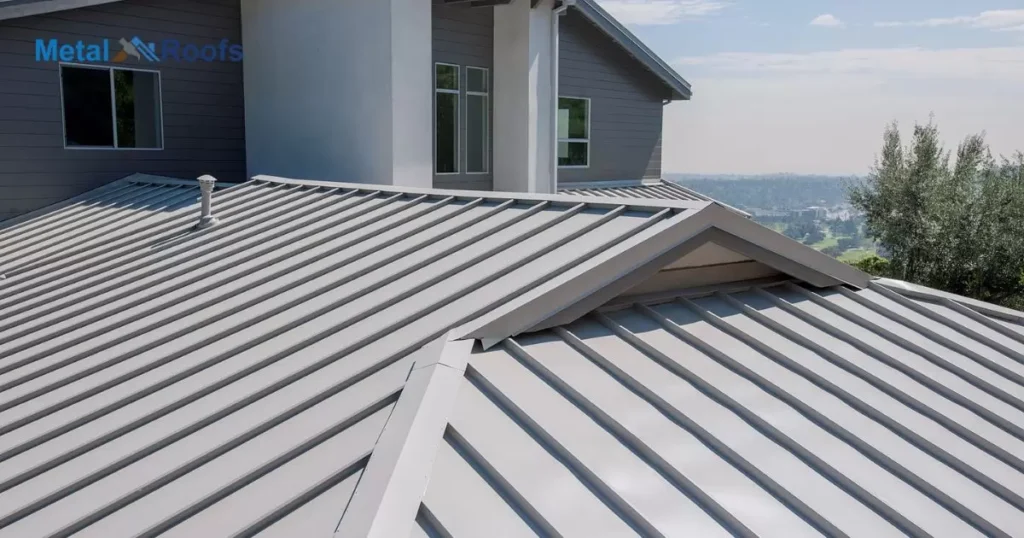
Metal roofing systems can handle high winds well. They’re strong and durable, making them a solid choice for windy areas. The key is proper installation; when done right, these roofs stay put even in gusty conditions.
To ensure a secure fit, it’s crucial to hire experienced professionals for the job. Their expertise ensures the metal panels are firmly anchored, preventing any potential issues in turbulent weather. In essence, metal roofs are a reliable option for high-wind areas, provided the installation is done by skilled hands.
What Measures Can Be Taken To Prevent Noise During High Winds?
When the wind gets rowdy, keep windows closed. Seal gaps to block whistling gusts. Secure loose objects outdoors. Tighten screws and bolts. Sturdy stuff stays put. Plant tall trees as windbreaks. Buffers reduce gust impact.
Select dense shrubs too. Obstacles ease the wind’s wild ride. Nature’s shield stands strong. Modify structures for wind resistance. Reinforce weak points. Strengthen roofs, doors, and windows. Solid homes stand firm. Wind noise fades away.
Metal Roofing Systems Be Damaged By Flying Debris During High Winds
During strong winds, metal roofs face a risk of flying debris. The gusts can turn everyday objects into projectiles, denting and scratching the metal surface.
Protecting your metal roofing system becomes crucial during high winds. Ensure nearby trees are trimmed, and loose items are secured to prevent potential damage. A little preparation goes a long way in preserving the durability of your roof.
Benefits Of A Wind-Rated Metal Roofing System
Wind-rated metal roofing systems offer superior durability, ensuring long-lasting protection for your home. Withstanding high winds, these roofs provide a reliable defense against severe weather, reducing the risk of damage and costly repairs.
The robust construction of wind-rated metal roofs enhances energy efficiency, reflecting sunlight and minimizing heat absorption. This not only keeps your home cooler in warmer months but also contributes to lower energy bills. Invest in a wind-rated metal roofing system for peace of mind, knowing your home is safeguarded against the elements while enjoying energy savings.
Expect From Metal Roofs During High Winds
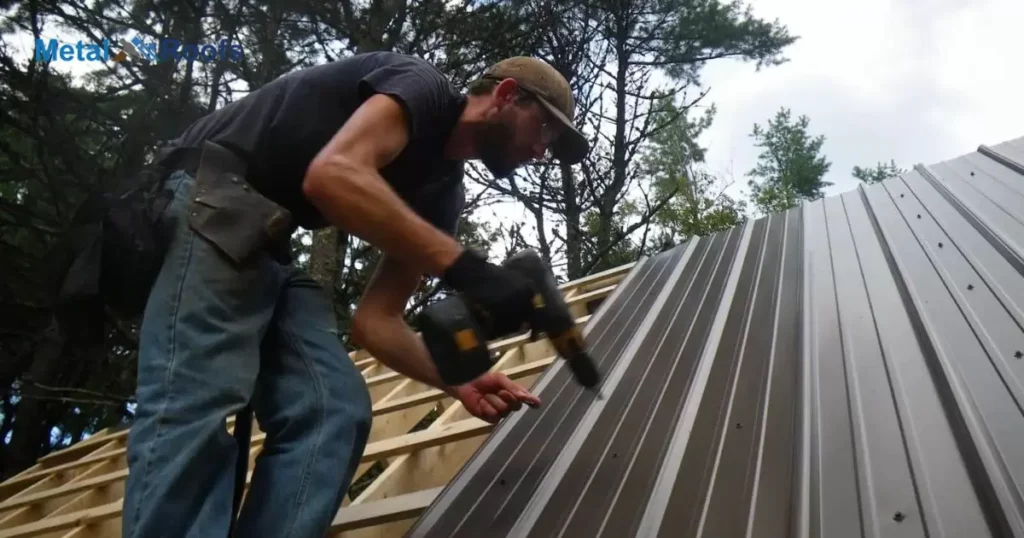
Metal roofs are tough. They stand firm in high winds. No flimsy shingles to worry about. Wind can’t peel them off like a banana. They interlock like a puzzle. No gaps, no weaknesses. Wind meets resistance. Metal roofs laugh in the face of gusts. Expect them to stay put. No drama, just strength.
Roofs shouldn’t be acrobats. Metal ones won’t flip or fly. They grip tight, a steadfast shield. With metal overhead, the wind’s just a passing whisper. No worry, just peace of mind under the stormy sky.
Maintain Metal Roof Tips
- Check for rust regularly.
- Remove debris and leaves promptly.
- Use a gentle detergent for cleaning.
- Inspect seams and fasteners closely.
- Apply rust-resistant coating yearly.
- Trim overhanging branches.
- Avoid walking on the roof.
- Fix leaks without delay.
- Choose compatible paint for touch-ups.
- Hire professionals for major repairs.
Metal Roof Construction Contributes to Wind Resistance
Metal roofs are sturdy. They resist strong winds. This is because they are firmly attached. The secure connection helps in windstorms.
In hurricanes, metal roofs excel. They don’t easily lift. Traditional roofs may fly off. Metal roofs stay put. Wind resistance is their strength. These roofs anchor tightly. They protect homes in storms.
Structural Metal Roofing
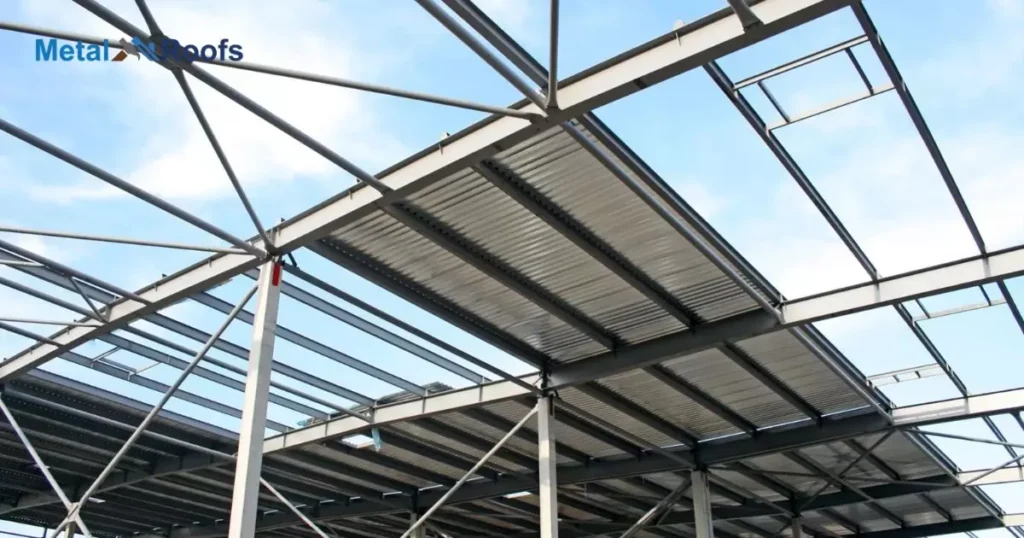
Structural metal roofing offers robust protection. It’s durable, standing strong against harsh weather. The tough materials ensure longevity. Installation is straightforward. Skilled professionals assemble it efficiently. It’s a reliable choice for lasting shelter.
Cost-effectiveness is a key advantage. Its longevity means fewer replacements. Choose structural metal roofing for a sturdy, lasting solution.
Frequently Asked Questions
Which metal roof has the highest wind rating?
Steel roofs generally have the highest wind ratings among metal roofs. They offer exceptional durability in high-wind conditions.
What is the strongest roof for the wind?
Structural metal roofing is the strongest for wind resistance. Its durable materials provide robust protection against harsh weather conditions.
What is the wind rating for a 5V metal roof?
5V metal roofs typically have a solid wind rating. They are designed to withstand high winds effectively.
Conclusion
In conclusion, understanding how much wind a metal roof can withstand is crucial. Structural metal roofing, known for its durability, stands strong against harsh winds. Its robust design ensures reliable protection for your property in challenging weather conditions.
Installation simplicity adds to the appeal. Skilled professionals assemble it efficiently, making it a practical choice for lasting shelter. The cost-effectiveness of these roofs, coupled with their ability to endure high winds, reduces the need for frequent replacements, making them a wise and economical investment.
